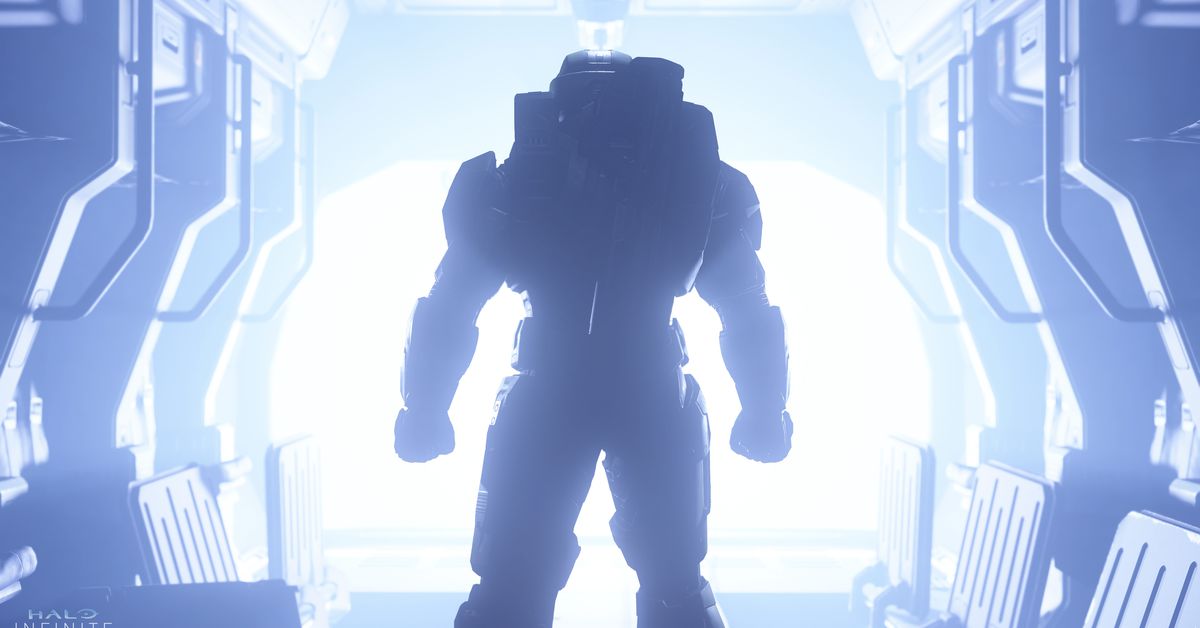
For a closeted trans kid, Halo’s helmeted cyborg felt like representation
When I was a child, I hoped to grow up to become a soldier. This is not uncommon among trans women. To live within dissociation is to live wearing armor.
When I was six years old in the 1990s, I lived in a Navy town with a mostly white population. I played with the white boys on the playground, but I wasn’t white, nor was I a boy (a fact I would not realize for many years). We played Army; we played Vietnam. We chased girls around the playground in a strange, gender-segregated game of tag. My best friend bragged about his father’s Navy hat, citing years of service; he gloated knowingly about the “scrambled eggs” embellishment on the visor and how he would have a hat like that someday.
I wanted to be a soldier when I grew up. I was in the closet, or perhaps I contained a closet. I constructed for myself an armor to protect the feeling that I knew should not exist within me: the feeling I got the first time I played Word Rescue for MS-DOS at age 4, the feeling of flight that arose within me when I played as the female character and saw her hair flutter in her jump animation. I understood by my young experience that this was not an allowable feeling. I created for myself boxes within boxes, each padlocked.
I did not become a soldier. But I was a child who kept secrets to survive: as trans writer Kai Cheng Thom once referred to herself, a “soldier in [my] soul.” And I spent much of my childhood playing soldier in Halo.
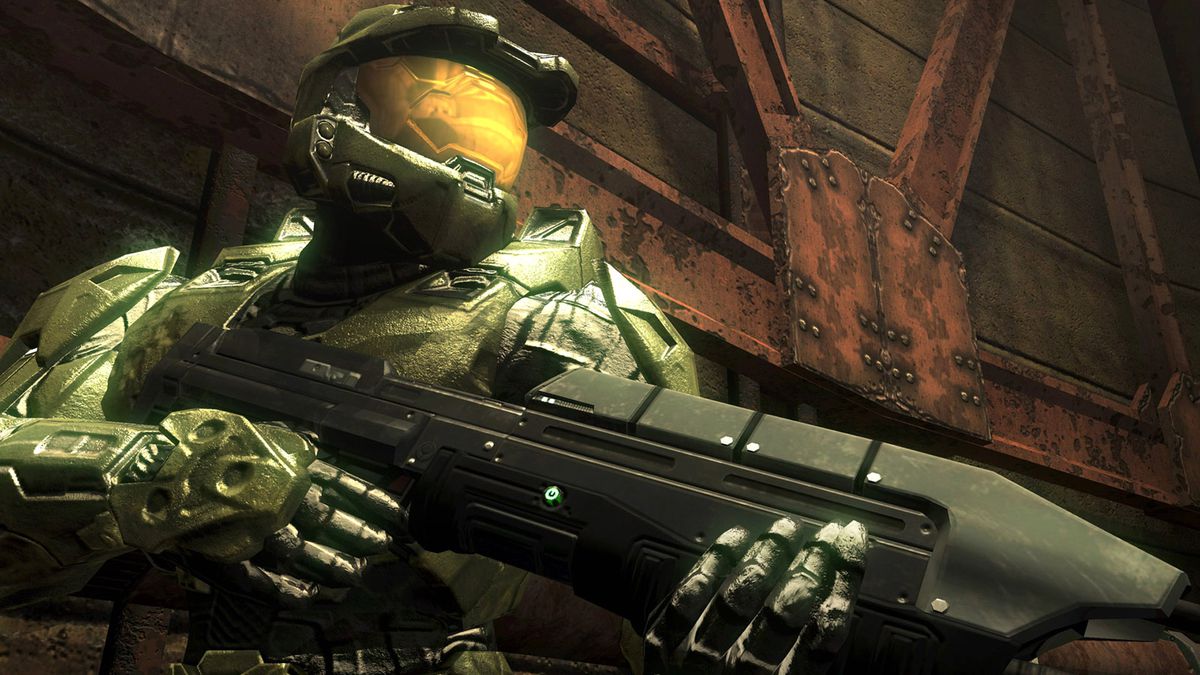
Image: Bungie/Microsoft Game Studios
343 Gamer Start
Released in 2001 as a launch title for the original Xbox, Halo: Combat Evolved and its sequels were something of an adolescent rite-of-passage for many suburban and urban millennial men in the United States, Europe, and Australia. The Halo formula was a prime fit for a certain type of masculine upbringing: player-vs-player combat with an arsenal of futuristic weaponry, a male soldier protagonist, a female sidekick, and hordes of aliens to slaughter.
I first encountered Halo one school night in 2003. My brother and I, plus several of the boys in our eighth grade math class, were invited to a game night our math teacher was hosting at a nearby tech center. I had heard of Halo, but had never played it. I had never seen an Xbox; I was new to consoles, our family having only recently purchased a GameCube after much begging and pleading. My brother, my teacher, another classmate and I loaded into a game of 4-person Slayer on Blood Gulch.
I was hooked from the first kill. I set out from my spawn location across the map, stumbling across a rocket launcher in no-man’s-land. I found a drivable vehicle crashed into the front of the other base. I got in, excited to drive, but it was the wrong side and I was trapped in the passenger seat. I turned to face the entrance of the base. A blue Spartan came traipsing out. I had my rocket launcher equipped. The vision of that kill is burned into my synapses with the fury of a hallucinogen trip. I went on to finish second on the leaderboard, a seemingly impossible feat.
My brother and I pleaded with my parents with all our might, and an Xbox and a copy of Halo were not long in coming. At the time, I did not know that Halo had a single-player mode; all I knew was this moment of multiplayer glory. Surprisingly, it was the single-player mode that captured my attention with a story that hit close to home.
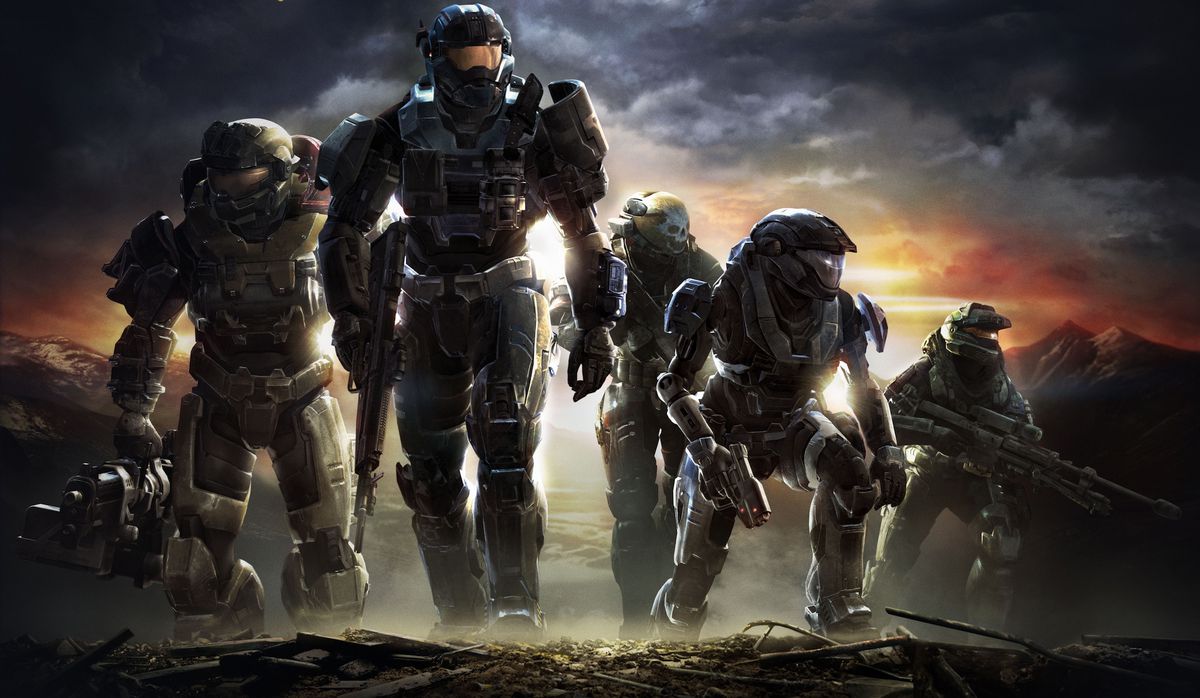
Image: Bungie/Microsoft
The Faceless Man
Consider the origins of the SPARTAN program, which produces Halo protagonist Master Chief Petty Officer John-117: In the midst of a deadly war that all of society has oriented itself around, a group of special children are secretly abducted from their families, replaced by “flash clones” that die within months. The children are chemically castrated; cybernetic modifications remove their human weaknesses and neuter their emotions and biological impulses. Indoctrination destroys their human connections. They are reinforced with metals and trained to become precise and unfeeling weapons of war. SPARTANs are dissociative and “hyper-lethal,” human but inhuman. They are tools inhabiting whatever roles they are assigned, and they play their roles perfectly. They are child soldiers who grow up to become adult soldiers. Their armor never cracks—those who break in the process are discarded. The process is deemed necessary by broader society, and knowledge of all the SPARTAN program entails is intentionally kept from the vast majority of the population.
In some ways, it’s Animorphs with power armor. In other ways, it’s a trans woman’s childhood in allegory.
I played the Halo campaign relentlessly, daily. I progressed through the difficulty settings and pored over fan websites, like the vital community hub Halo.Bungie.org. In real life, I was an awkward teenager who hit puberty far too early, who kept running into adults and their gendered expectations, who didn’t understand why I was so angry and unable to fit into the social roles and relationships inhabited by young men and women. In Halo, I was a soldier in an armor suit who shot familiar aliens with familiar weapons. My real life felt like it had not begun and would perhaps never begin, for reasons I couldn’t define as trans. In the game, I always knew where I was: the security facility in Silent Cartographer, the final bridge on Assault on the Control Room. (I still got lost in The Library.)
Spartans are tools inhabiting whatever roles they are assigned
The SPARTANs’ backstory is not present in-game. From Halo’s script, what you know about Master Chief is that he is a special soldier who is unfrozen right before a pivotal encounter with alien forces. He is a man (we presume) in armor that covers his whole body and head. He serves whatever role the AI in his head and the troops on the ground need of him. He’s a shell that takes orders, who takes weapons his commanding officer gives him or picks them up off the ground. We don’t know if he has friends or relationships other than the purely professional relationships he develops by necessity in the process of killing aliens, mediated by a chain of command. Game critic and developer Tim Rogers puts it bluntly: “Master Chief isn’t a character or a person—he’s an icon. He never takes off his mask, because, as one of Halo 3‘s producers said, ‘if he took off that helmet, it’d be you inside.’”
For a child like me, the idea that no one needed to know who you were inside was an escape. Inside, I was a dissociative mess. Deep within myself, I was furious at the way my childhood had developed. It was full of domestic conflict and the weight of parental expectations for my social and career success that I suspected could not be fulfilled by the person I was. I was frustrated by the unmistakable differences of my immigrant upbringing that held me apart from my white American peers. Above all, I was unaware of my inner turmoil. My inner self was a black box, even to me. Common childhood injunctions to “follow your passions,” the kind that my peers took seriously, felt impossible to understand: what passions? I thought the phrase must be a metaphor.
Master Chief had no such problems. He was made to be a soldier, and therefore he was one. He was not expected to relate to his peers; in fact, none outside the exclusive SPARTAN program could even consider themselves his peers. When he said “Give me a weapon” at the beginning of the game, it was abundantly clear what would follow: shooting enemies. The problems of Master Chief’s life all walked (or crawled, or shambled) towards him, and the solution rested firmly within his right hand. No one asked Master Chief what his passions were; it was as meaningless a question for him as it was for me. He had locked up his feelings as a child, as had I. He was made perfectly for his purpose, in all the ways that I feared I was not. He was applauded for his professionalism; I was terrified of my emotional distance.
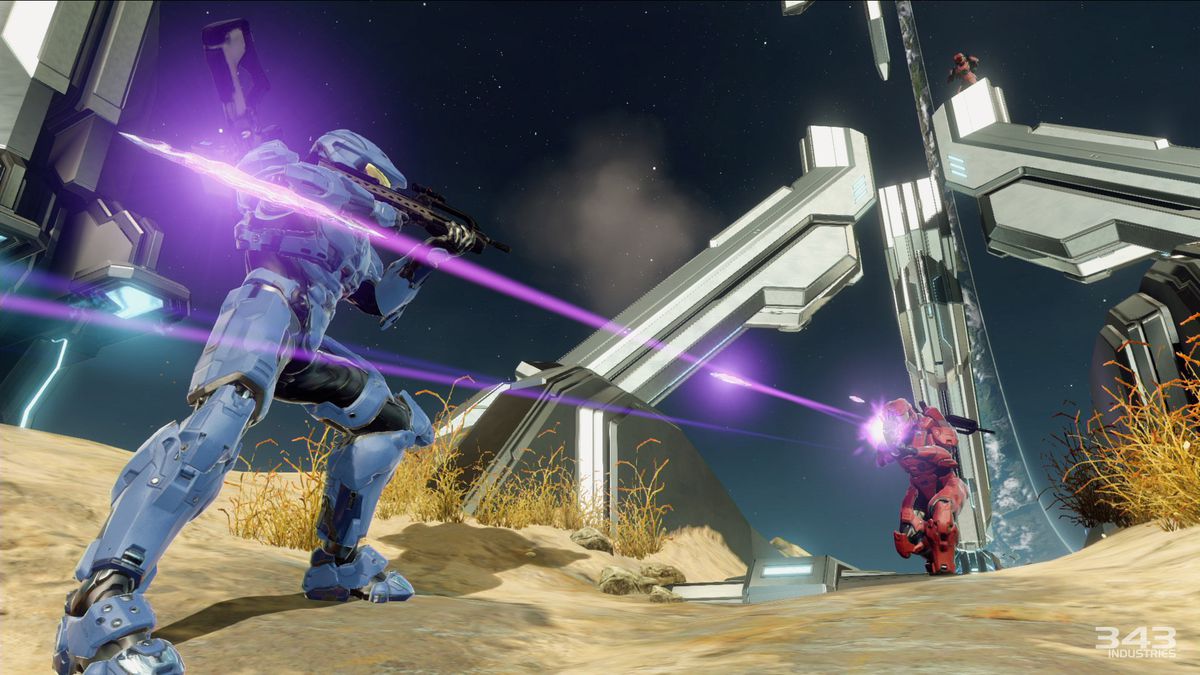
Image: 343 Industries/Xbox Game Studios
A Welcome Grave
Halo 2 was the first game I ever preordered.
After Halo 2’s release, my parents vetoed Xbox Live. My father saw online gaming as a frivolous expense when I should be focused on studying and becoming workforce-ready. In retrospect, this wasn’t necessarily an inaccurate judgment; the chances of a 15-year-old becoming a pro gamer were slim (though not impossible: my high school’s Halo 2 tournament was won by a boy who would later become known as esports star and caster MLG Bravo). Still, I spent sleepless nights cursing dashed ambition and visiting friends’ houses to get my fix of the game’s new “matchmaking lobbies,” where hormonal young men playacted manhood by spewing brash, offensive trash talk in between rounds of online multiplayer.
Without consistent access to multiplayer, I turned to Halo 2’s campaign mode. This time, Master Chief was a defender of Earth and inadvertently fueled an alien civil war. Once again, all problems could be solved by shooting at them, by playing the role you were given. The alien Covenant, who are portrayed as fanatics of a religious cult, produce a key character who rebels against his mission and changes the arc of the series. In contrast, Master Chief never rebels against the machine. As the mysterious alien corpse-being known as the Gravemind notes of our protagonist: “This one is machine and nerve, and has its mind concluded.”
It is hard to know how I felt about Halo 2’s story; after all, one hallmark of my time in the closet was that it seemed impossible to feel, like the world was wrapped in gauze. What I do know is that I played the campaigns on repeat. They felt more real than my daily life, which was consumed with future planning: college, then career ambitions, then presumably the grave.
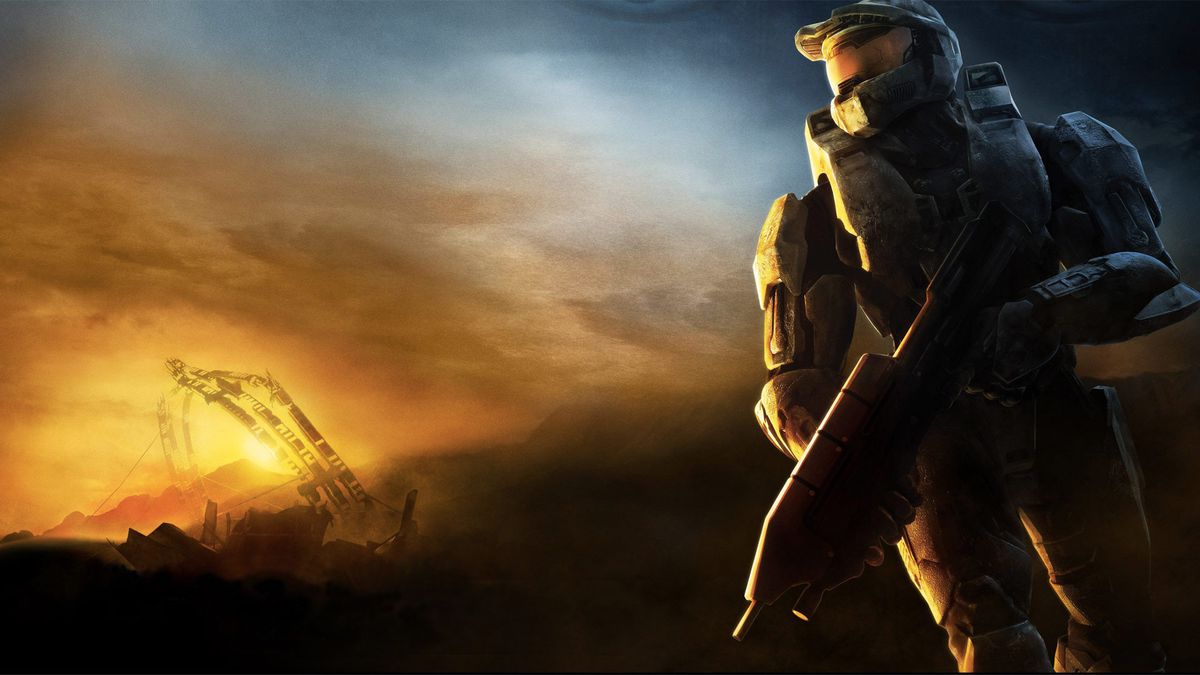
Image: Bungie/Microsoft Game Studios
By 2005, I was aware that my problem was gender. I had seen a provocative gender-bending commercial on TV. That advertisement sent me down a rabbit hole of search engines, Googling “boy turns into girl,” looking for more transgender content. The prospect of gender transformation made its sharp intrusion into my unfeeling life and showed me a glimpse of real emotion. I was obsessed with transgender media for reasons I couldn’t explain. I stayed up late at night binging it. It terrified me. At some point, I was sure, this terrible secret would come out and destroy my career and life prospects.
All problems could be solved by shooting at them, by playing the role you were given
Playing Halo 2 became a way to avoid feeling. Online reviewers pilloried the game’s cliffhanger ending and how it avoided concluding Master Chief’s narrative arc. These complaints made little sense to me: for me, Halo was an action to be taken and repeated, not a story with a destination. It was comfort food whose taste mattered less than its familiarity and safety. With time, I grew fond of all the aspects of the game reviewers disliked: the abject polygons of the characters’ faces, the Gravemind’s intoned proclamations looming in the background of the action, the convoluted alien civil war which is never fully explicated in-game. I memorized enemy spawn locations. I started reading the Halo novels, committing lore to memory. “This is not your grave,” the Gravemind told me, “but you are welcome in it.”
After Halo 2, I began to understand the series as my refuge from the reality of my own transness, even despite my inability to name my identity as trans. My relationship to the series waned, but it always seemed to resurge whenever life gave me too much time to think about who I was. Halo 3 found me in late high school, in the peak of college application anxiety. I caught up on Halo 3: ODST, Halo: Reach and Halo 4 in a spell of post-college unemployment, connecting with the online speedrunning scene and eventually helping to found the speedrunning website HaloRuns. Much later, during the COVID pandemic, I briefly rediscovered my Halo fixation and indulged my completionist instinct to get every achievement. (I had begun my gender transition by this point. My old gamertag appears in a speedrunning achievement in Halo: The Master Chief Collection–the gamer equivalent of a deadname, I suppose.)
As written by Bungie, Halo’s original developers, the protagonists of each Halo game — the Chief, Halo 3: ODST’s Rookie, Halo: Reach’s Noble Six — are nothing if not dedicated to their missions. They are strong, silent, their personalities redacted, their presence itself a meaningful void. At the end of Halo 3, Master Chief becomes a noble sacrifice in service of a higher purpose, a loyal soldier to the last. Having successfully destroyed one alien enemy and achieving a tentative peace with another, his reward is to float marooned in deep space, stuck aboard the half of his spaceship that did not make it through the Slipspace portal back to Earth. It is possible he will perish out here. He does not seem to feel much at this state of affairs. “Wake me when you need me,” he tells his AI companion, and climbs into the armored cocoon of his cryo-chamber. It is not his grave, but he feels welcome in it.
Image: Bungie via sebanatic5000/YouTube
A Soldier in their Soul
Depersonalization is a common phenomenon in trans people, as attested by trans writer and Youtuber Zinnia Jones’ writings on gender dysphoria. In a 2018 blog post, she wrote of her attempts to don armor against the world’s injuries:
Depersonalization protected me even as it killed off the parts of me that made anything matter in this world, as if to shield me from some catastrophic personal collapse that was bound to happen… There have been times when, feeling shamed or humiliated and without access to that protective inner core, I reacted by covering myself in as many layers of clothing as possible… [emphasis added]
Trans writers such as Lucian Clark and Azure have identified their trans sense of dislocation in the monstrous, or in warrior goddesses defined by their weapons. Writer and Warhammer 40,000 fanatic Natalie Reed has pointed out that the creation of a “Space Marine” is inherently a fiction about a violent patriarchal socialization process that strips boys of their emotions and turns them into “living weapons.”
In her essay “A Maze of Murderscapes,” S.R. Holliwell wrote of her time spent playing Metroid II while homeless in a women’s shelter in Providence, Rhode Island:
Digital objects [missile-doors, shrines, map tiles] were my city streets, my landmark buildings… I felt like an object myself, representative of something no one can ever know, moving through the city where people passed by me as unknowable figures that intrigued me just as I might intrigue them. … A delight and mystery in having nowhere in particular to be and exploring the world around me. [emphasis added]
Holliwell’s remembrances point to the critical distance created by the armor of dissociation, how it can be alienating but also give one freedom to explore and become. At the end of the first Metroid, Samus takes off her armor and reveals herself to be a beautiful woman. “Gotcha,” she seems to be saying, “you didn’t know who I was at all.”
It’s important to note that Holliwell was not writing specifically of the trans closet in her essay. The dissociative armor of the trans closet itself is most incisively described in Isabel Fall’s “Helicopter Story” (originally, and I believe preferably, titled “I Sexually Identify as an Attack Helicopter,” a provocative riff on a transphobic meme beloved by extremely-online young men in the early 2010s). Fall’s story follows a character named Barb, a female-to-helicopter transsexual, and explores “tactical gender”: our gendered passage through the world and its similarities to military indoctrination. Through its metaphor, the story explores the ways in which we armor up, attack, and defend; our patterns of motion, shows of force, whether we announce our presence or go radio silent.
The story has since been withdrawn from publication but lives on in internet archives. In it, Barb says:
My body is a component in my mission, subordinate to what I truly am. … When I joined the Army I consented to tactical-role gender reassignment.
The reasons for war don’t matter much to us. We want to fight the way a woman wants to be gracious, the way a man wants to be firm. Our need is as vamp-fierce as the strutting queen and dryly subtle as the dapper lesbian…
When I was a woman I wanted to be good at woman. I wanted to darken my eyes and strut in heels. … And at the same time I resented it all. I wanted to be sharper, stronger, a new-made thing, exquisite and formidable. Did I want that because I was taught to hate being a woman? Or because I hated being taught anything at all?
Now I am jointed inside. Now I am geared and shafted, I am a being of opposing torques. The noise I make is canceled by decibel killers so I am no louder than a woman laughing through two walls.
[As a woman,] I was always aware of being small: aware that people could hurt me. … No one stalks an attack helicopter. No slack-eyed well-dressed drunk punches you for ignoring the little rape he slurs at your neckline. No one even breaks your heart: with my dopamine system tied up by the reassignment surgery, fully assigned to mission behavior, I can’t fall in love with anything except my own purpose. [emphasis added]
Image: Twitter/Newsweek
“This one is machine and nerve, and has its mind concluded. This one is but flesh and faith, and is the more deluded.” — The Gravemind, Halo 2
Fall was castigated for writing her story: some supposedly progressive commentators claimed such a deviant intermingling of gender and warfare could only be the anti-feminist work of a cisgender man. The vicious backlash pushed Fall off the internet, her story withdrawn by her request, her trans personhood retreating before overwhelming force. As she told Viaggio247 this summer:
In this story I think that the helicopter is a closet. … Where do you feel dysphoria the hardest? In the closet. Or so I have to hope; I have not been anywhere outside it, except for [in publishing “Attack Helicopter”], which convinced me it was safer inside. … The story was withdrawn to avoid my death.
Barb’s helicopter body is SPARTAN-117’s armor. For me, the story of Halo has this same feeling that Fall references: the closet feeling, terrible and comforting. It is a joy to be a Hyper-Lethal Vector, as are Master Chief and Noble Six of Halo: Reach. It is the joy of armor, protection, distance. It is the false freedom of remaining unseen and untouched.
I want to emphasize one word above: false. The Viaggio247 piece characterized Fall’s withdrawal as “the option of retreating to the relative safety of her legal, masculine identity.” This is an easy summary, but “safety” is far from the true picture of what the closet entails. Armor does not grow with the person it protects, as any hermit crab knows; it constricts and smothers even as it allows one to grow. Despite the closet’s promise of freedom, movement within it comes with limitations.
The closet is not safety; the closet is a sense of false security
In “Helicopter Story,” Barb’s rising gender dysphoria poses a threat to her mission and existence. At no point in Halo can Master Chief put down his weapons and talk to the aliens. The campaign will always proceed the same way: he will crash land on the mysterious ring world, he will fight his way across landscapes and spaceships, he will make the noble sacrifice, save the day and float off into distant space. The trans closet functions for us as Master Chief’s narrative constraints function for him. His freedom of choice is limited to cutscenes which we do not control.
And no matter the strength of his armor, when his shields are depleted, Master Chief bleeds. The closet is not safety; the closet is a sense of false security, within which one continues to accumulate damage upon damage.
At the end of Halo 4, we see Master Chief’s face. One of my trans comrades has argued to me that this is the moment where Halo betrays itself; after all, regardless of what canon might say, that’s you in there. Master Chief has worn this armor since the beginning of Halo 2 — approximately four years and nine months, per canon — and this is the first time we see it removed. We see technicians guiding specialized machines around his body, unscrewing and collecting and unclamping the tons of combat-grade metal plate. Like real armor, it does not come off easily. Like real armor, it is a process that takes time and requires help from others.
Under that armor, Master Chief was someone I did not recognize.
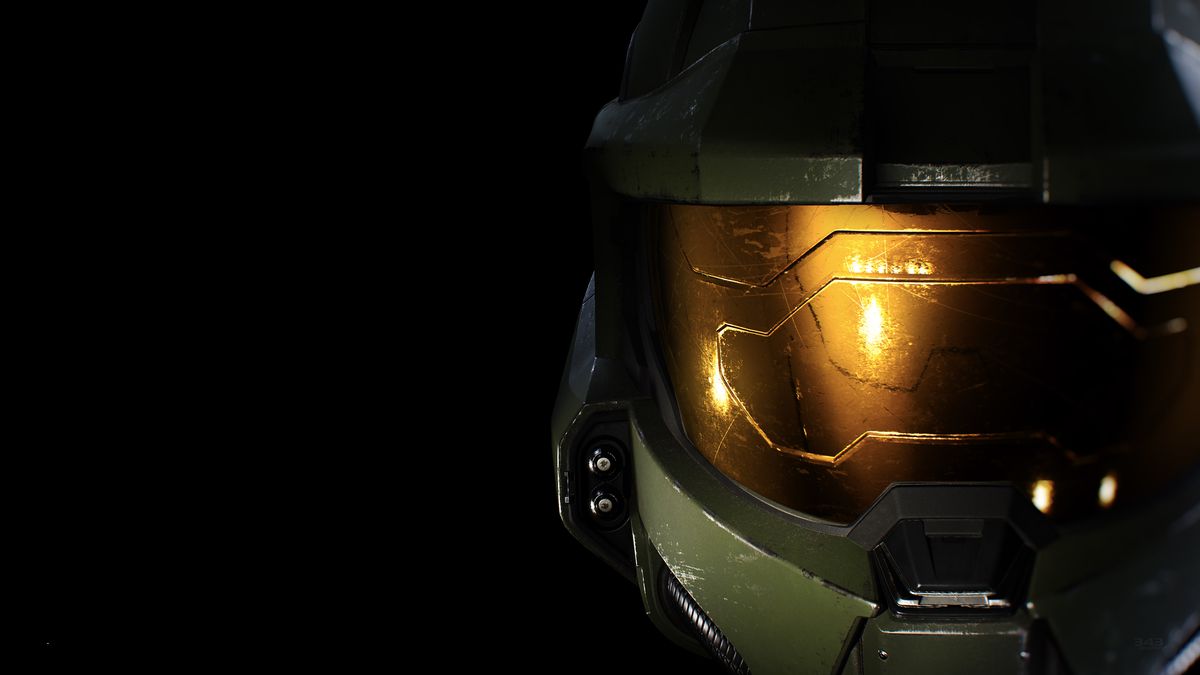
Image: 343 Industries/Xbox Game Studios
Wake Me When You Need Me
I have spent much of the last several years learning to take off my own armor. Hormones have helped, as has feeling more comfortable in my body. I have had external help from therapists, friends, and loved ones. In that time, Master Chief has continued his own journey towards a distinctly male, market-oriented personhood. Halo 4 leans into the relationship between Master Chief and his AI partner Cortana. Games reviewer Erik Kain writes in Forbes of its “beautiful, tragic love story,” driven by Master Chief’s emotion-driven need to find a cure for her incipient robot dementia, while noting the game’s “odd sexualization of Cortana.” Halo 5: Guardians (which I have not yet played) holds as its narrative conceit that Master Chief has gone rogue and must be hunted down by military forces. In both games, Master Chief disobeys direct orders from superiors in order to protect Cortana and follow where she leads. Even without the romantic subtext, it’s clear that the future of Halo protagonists is one of complex human connections that tie them to specific canonical identities, relationships, and character traits. 343 Industries, the developer of Halo Infinite, promises that the days of treating the SPARTAN as an empty orders-following vessel are over; henceforth, he will have ample characterization and a “human story.”
Trans people have to find ourselves in stories that weren’t written for us
Perhaps my disconnect from the narrative development of the later Halo games is simple: Master Chief’s developers have decided to make him a person, and that person is not me. That person is a white male soldier, much like the other white male soldiers that populate the first-person-shooter market space. The AAA shooter fanbase skews towards young men, and developers need to market their content towards their customers. They generally don’t make AAA video games about people like me.
Other kinds of people (mostly white men) are the ones who get “human stories,’’ marketable stories. Trans people like me get allegory, allusions, and headcanons. (Someday I’ll tell you how Halo: Reach’s Noble Six is a he/him lesbian.) We get internet listicles of “trans-friendly characters” as human and real as Birdo. So trans people have to find ourselves in stories that weren’t written for us. We make memes of popular video game characters saying “trans rights” while deciding for ourselves which characters we will claim as part of the community.
Given that reality, I’ll take what I found in Halo’s story. I hold out hope that I can come around to John-117’s new personhood, that I can learn to accept him on his own neutered-white-male-cyborg terms. But I doubt I will bond with him the way I did with the original Halo games and their faceless armored man. While I suffered in the closet, I am trying to build compassion for the kid who survived that closet. That compassion extends to closeted characters. To this day, I’m attached to helmeted characters and stories that don’t tie them to emotional connections. The amnesiac, dysphoric, closed-off and guarded will always find a friend in me.
nat “stylo” is a musician, organizer, writer, and sometimes-gamer. She posts on social media @stylo9000 and stylo-999.tumblr.com.
